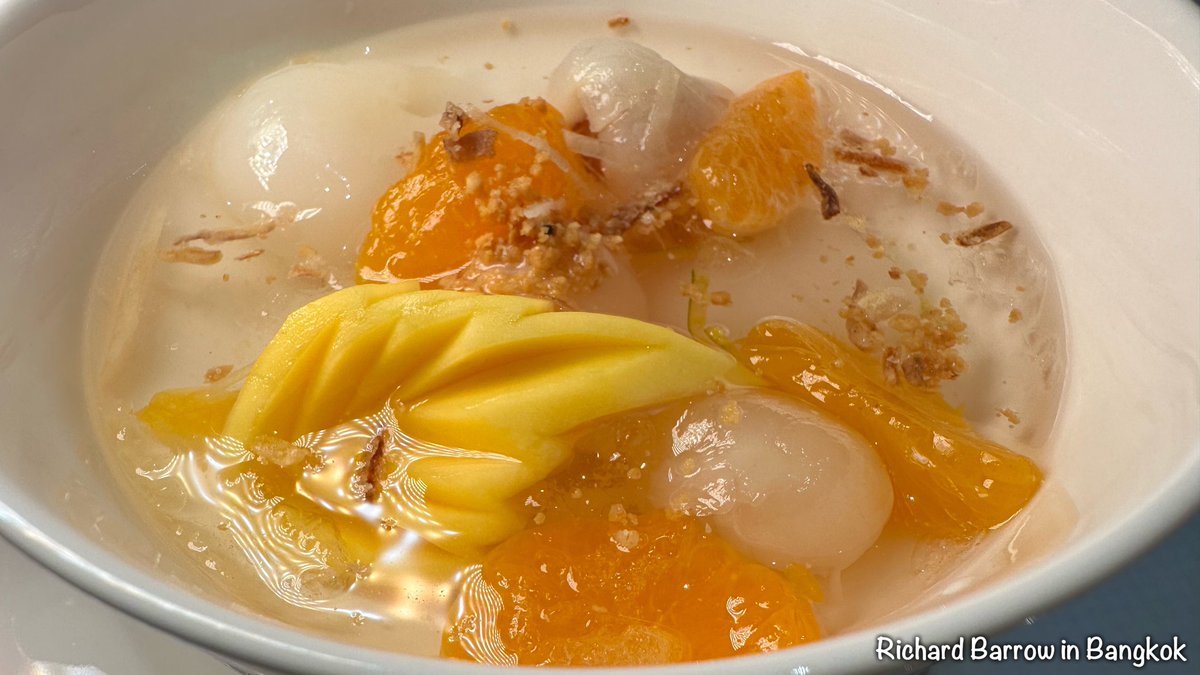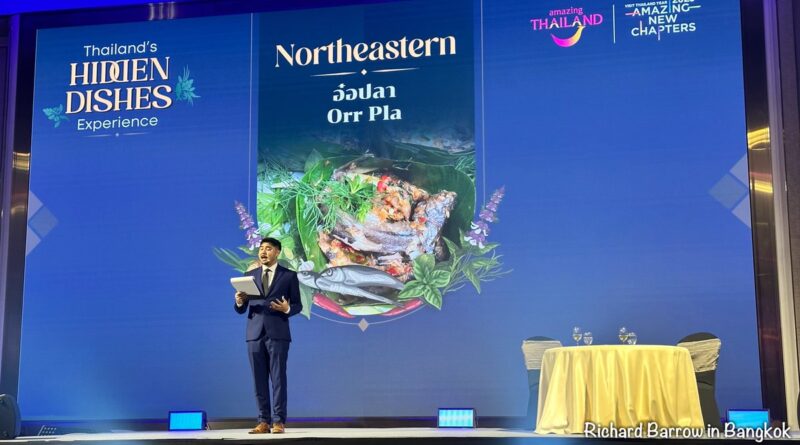Thailand’s Hidden Dishes
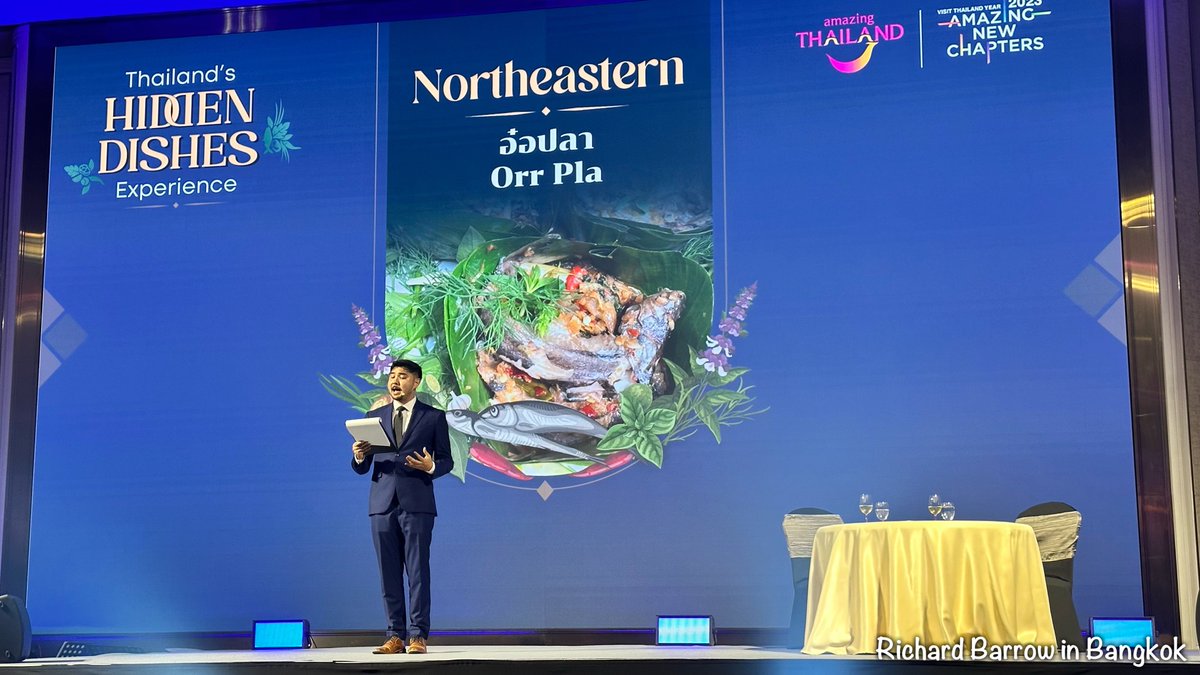
No. 1 – Pla Yum Sawat (blue spotted grouper with shredded radish)
Trat in the Eastern Region is known for its marine aquaculture of Pla Yum Swath (coral grouper, or coral trout), making it the economic fish of the province and a local specialty food. The fish is tasty and can be… https://twitter.com/i/web/status/1660653035830362114
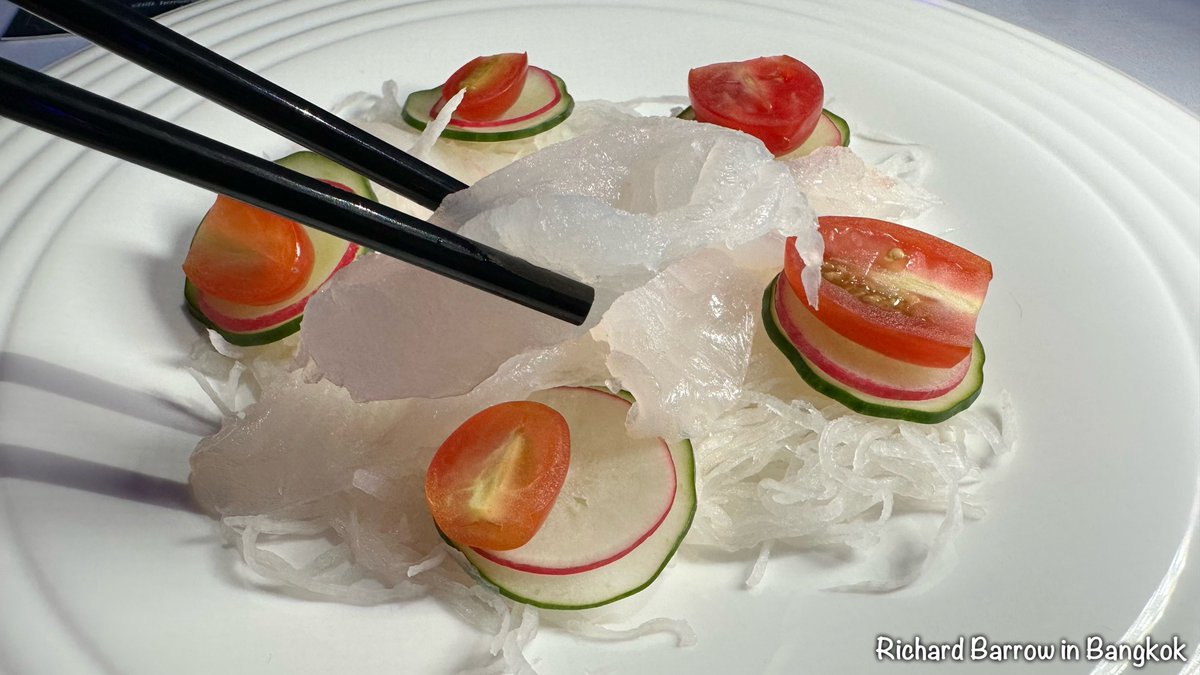
2. Moo Phat Raak Choo (stir-fried pork with the roots of hooker chives or garlic chives)
In Northern Thailand, one of Chiang Rai’s local specialty foods is Moo Phat Raak Choo, representing an ethnic-Thai dish influenced by Yunnan cuisine. As well as stir frying with pork, the… https://twitter.com/i/web/status/1660653056642494474
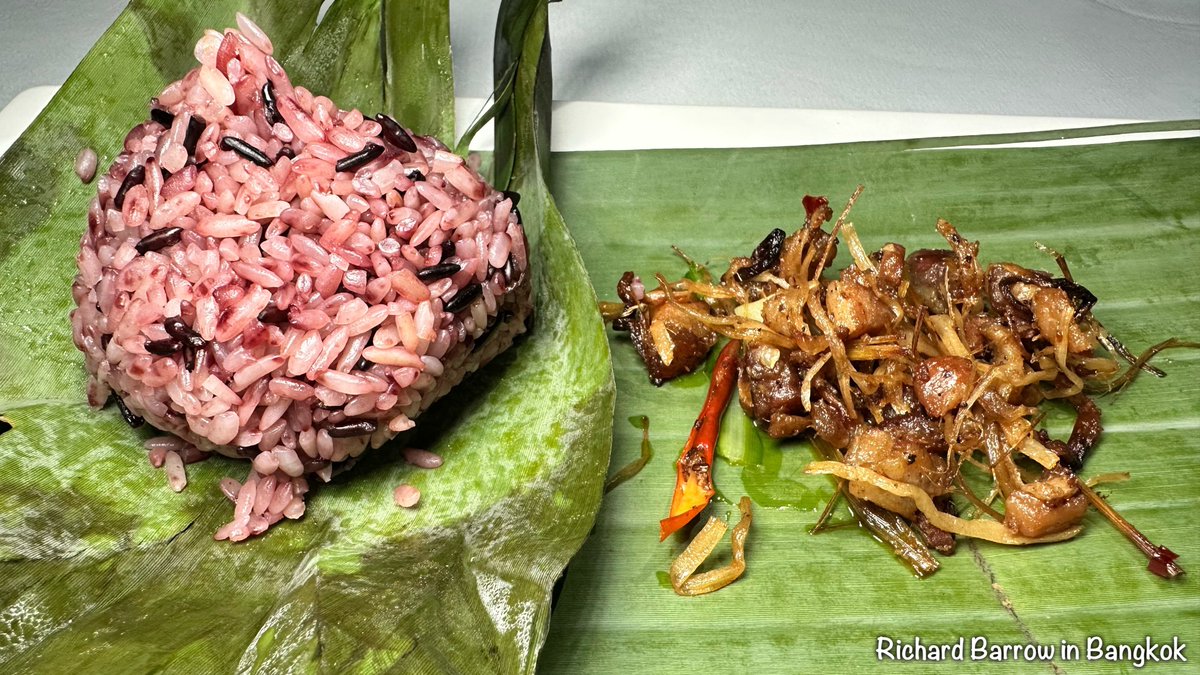
3. Kaeng Hua Nod (Toddy Palm Curry)
Representing the Central Region is Phetchaburi’s Kaeng Hua Nod (also known as Kaeng Hua Tan). Phetchaburi, which has been honoured with the UNESCO Creative Cities Network (UCCN) title in the field of Gastronomy, is synonymous with several… https://twitter.com/i/web/status/1660653075156049920
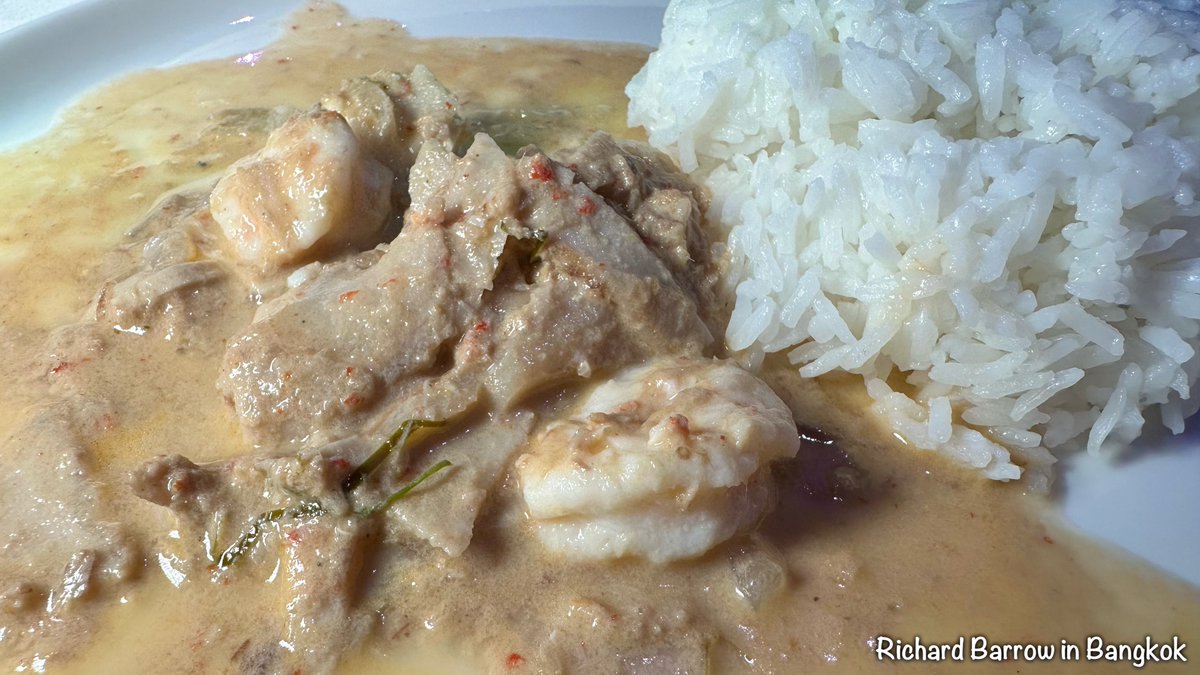
4. Kaeng Nam Khoei Yod Waai (coconut-based curry with shrimp or fish paste sauce and rattan shoots)
Phatthalung’s most popular local specialty foods include Kaeng Nam Khoei Yod Waai. Southern Thailand is known for using Nam Khoei (shrimp or fish paste sauce) as seasoning rather… https://twitter.com/i/web/status/1660653094064078853
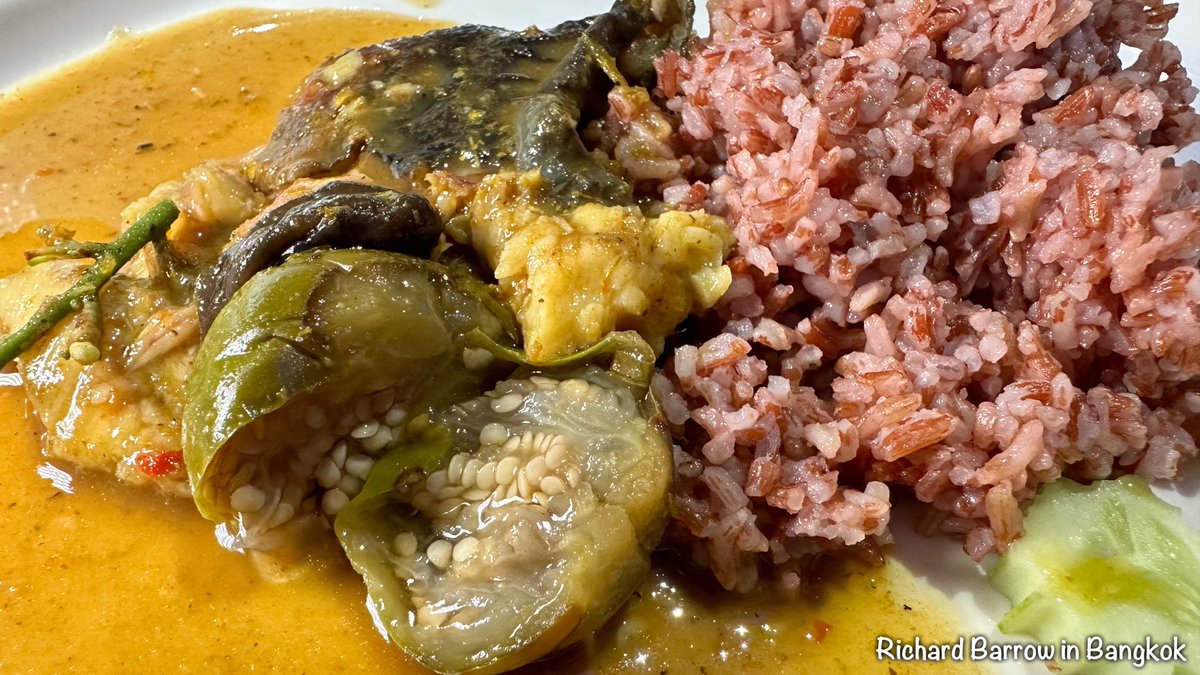
5. Au Pla (spicy and salty freshwater-fish soup)
In Northeastern Thailand (or Isan), Khon Kaen’s Au Pla showcases the flavourful and distinctive Thai-Isan food culture. Isan has many rivers, where freshwater fish are in abundance, thus many local dishes use freshwater fish as… https://twitter.com/i/web/status/1660653112758091781
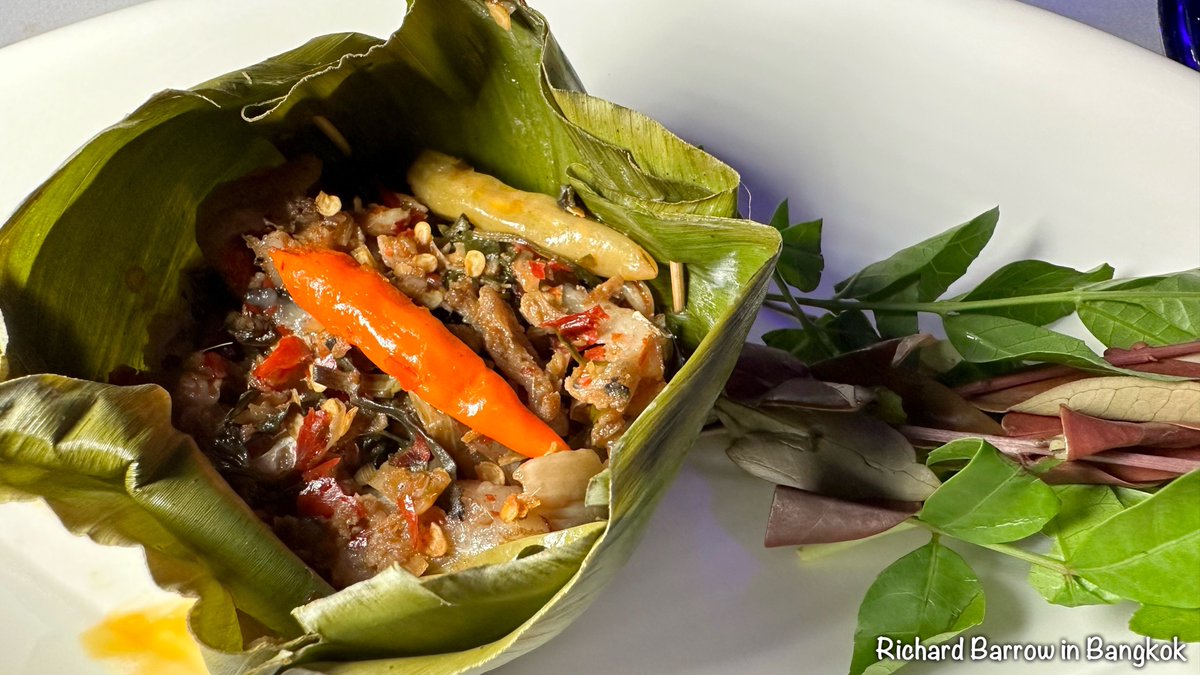
The evening meal finished with this fruit for dessert. I can tell you we needed that as the last dish was very spicy. My favourite was the second one, Moo Phat Raak Choo. But I also liked very much the first and third dishes.
